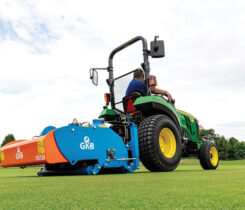Turf toughie
We all know that thatch is not good for turf. Students in Qingguo “Jack” Huang’s classes — and astute superintendents — need to appreciate the impact of thatch.
As assistant professor in environmental water chemistry in the department of crop and soil sciences at the University of Georgia’s Griffin Campus, Huang expects his students to appreciate the “why” behind the question: Why is excessive thatch a problem to turf?
“There are multiple aspects in the answer,” he notes. “I would take it as correct if the answer can hit on three or four key items.”
How many reasons can you come up with?
Among the acceptable responses, Huang says, are the following: excessive thatch accumulation increases disease and insect problems; reduces pesticide effectiveness; decreases water infiltration; reduces hydraulic conductivity; increases localized dry spots; reduces tolerance to cold temperatures; results in poor aesthetic value; and causes shallow rooting.









